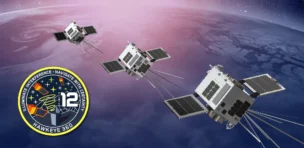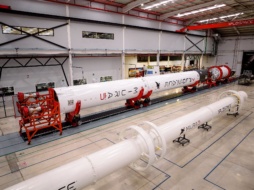Wednesday’s planned Starship launch may be the seventh test flight of the mega-rocket, but it also represents a couple of important firsts—the first flight of the new and improved second stage and the first time the rocket will attempt to deploy payloads.
The rocket is set to launch at 5pm ET on Jan. 15 from SpaceX’s Texas launch facility. Here’s what we’re watching ahead of the test.
Upgrades: Starship V2 will feature significant changes up and down the spacecraft, taking lessons from previous flight tests to improve reliability and performance. The upgrades include:
- Height and stretch: Starship’s height has increased by nearly 2 meters, and its tanks have been stretched by 25% to house more propellant in a bid to boost Starship’s payload capacity to 100+ tons to LEO.
- Propulsion: SpaceX added vacuum jacketed feedlines to minimize cryogenic fuel boil-off.
- Forward flaps: The forward flaps used for vehicle control on reentry are positioned higher on the vehicle and further away from the heat shield.
- Avionics: SpaceX completely overhauled the avionics system to support increasingly complex missions, including in-space propellant transfers and a second-stage Starship catch.
- Heat tiles: The company added next-gen heat tiles, including a backup layer of protective material.
Metal heat tiles: Starship’s heat shield is the biggest gating item in SpaceX’s goal of rapid and reliable rocket reusability. In addition to new ceramic tiles, SpaceX will test a few metal heat tiles (including one with active cooling) on Flight 7 as it continues searching for the right heat shielding solution.
Another first: SpaceX is planning to deploy 10 dummy Starlink satellites on this week’s flight—the first payload deployment for Starship. The mission is a test run for future large-scale deployments of its next-gen satellites on Starship.
Another, another first: SpaceX will fly a used Raptor engine on its booster for Flight 7. The engine was salvaged after Flight 5’s booster catch.
Booster caught, wen second stage? The introduction of Starship V2 upgrades comes ahead of a busy year of technically challenging missions. In the first half of the year, and as early as the next launch, SpaceX plans to attempt a Starship spacecraft catch back at the launch pad, which would allow for 100% rocket recovery once it can be completed consistently. After that, it’s all eyes on the Starship-to-Starship in-space propellant transfer mission, an important milestone for NASA’s Moon and Mars goals.




